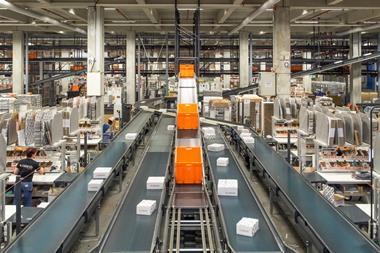The consumerisation of technology is bound to drive innovations in shopping, but nothing yet has had the same kind of potential as the increasing ubiquity of smartphones.
The consumerisation of technology is bound to drive innovations in shopping, but nothing yet has had the same kind of potential as the increasing ubiquity of smartphones. Smartphones are putting power and data gathering tools in the hands of ever more information hungry consumers, who expect to be able to use their phones to get the information they want.
And some retailers are already giving it to them.
You need only look as far as Tesco’s virtual shopping wall in Gatwick (or indeed, Ocado’s wall in the Bullring or Tesco’s subterranean shopping wall in South Korea) to get a flavourof what the future might hold. By giving customers the ability to directly control their shopping experience, handling scanning, payment and delivery on their own devices, we’re getting a glimpse of the future of retail.
None of this would be possible without the bar code, and it’s fantastic to see a 40 year old piece of technology continuing to play such an important role. The arrival of the bar code in the 70s prompted fears from some consumer groups that the lack of price labels would lead to overcharging but by the mid-90s the bar code was ubiquitous. Bar codes have come back on the agenda for customers, with the ability to scan on their mobile phones to research, compare and purchase products.
Increasingly we’re seeing customers using their smartphones in store to research products or find out more about them, scanning the bar codes to get nutritional and allergen information or even to compare prices. Indeed, IGD’s The Connected Shopper report, 2012 found that 40 per cent of shoppers now want to be able to compare prices using their mobile in-store, up from nine per cent just two years ago. A similar number also want to be able to find items, receive location-based promotions, and redeem e-vouchers on smartphones.
M-coupons are the next step in integrating m-commerce and enabling customers to really take advantage of technology in-store.
Currently, coupons are fairly fiddly, often being lost, forgotten or left at home – whereas if delivered straight to a mobile phone, they become much more user-friendly. What’s more, by using the insights gleaned from customer behaviour on smartphones, such as shopping history or the products scanned during the course of a shopping trip, m-coupons can be tailored to appeal to individual customers, making them a much more efficient as a loyalty driver.
According to IGD, over three quarters of shoppers believe that internet and mobile-based technology will improve the retail experience. Underpinning this technology, and key to its success, is the humble bar code which is the bridge between the customers and back-end IT and supply chain systems. Having the correct standards in place to make these codes work effectively will be increasingly important for retailers as they look to make the most of the new mobile opportunity.
Gary Lynch, chief executive, GS1 UK
Gary joined GS1 UK in 2002 and in 2007, the supervisory board appointed him chief executive. He is a member of the GS1 Advisory Council, GS1 in Europe Board and a member of the GDSN Board of Governors. Before joining GS1, Gary was Avaya’s eBusiness Director, responsible for the international deployment of their CRM systems for their business partners.


























1 Reader's comment